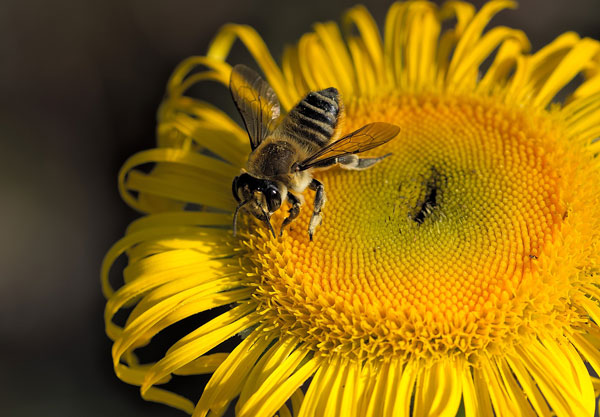I am fairly new here at Muskingum Soil and Water Conservation District (MSWCD) and have learned a lot about how important the work done on Underwood Street is for our community. I was hired as an administrative assistance, but in a short time, I have developed a great love for conservation and its importance.
I started with no agricultural background. I quickly learned that there is a huge difference between soil and dirt. I shared with my new-found friends at MSWCD that I didn’t like to touch dirt; it was never on the top of my list of what I would like to get my hands on. Maybe a new pair of shoes, but dirt, no. My friends here tried to help me with my aversion to dirt by leaving it here and there. What really helped, was learning the difference between soil and dirt. Dirt is dead. Soil is alive. Wow! What an awakening. I learned that you must keep life in soil for it to stay alive. Keeping soil covered with vegetation keeps life in the soil. It also allows creatures living underneath the soil to do their job to keep soil healthy. Keeping soil covered with vegetation will also help with soil erosion. This is what we call cover crop. We at Muskingum Soil and Water Conservation District work hard to educate our staff and our community on the importance of keeping our soil alive and productive. I am excited to share that there is a science and technique behind soil conservation.
Have you noticed that we don’t see as many butterflies or bees flying or buzzing around? Preserving our pollinators is one conservation practice that I have learned about. I had never noticed the decrease in these pollinators until I started working with MSWCD. (You noticed, I said pollinators; that’s conservation lingo). MSWCD educates and provides the resources to encourage our community to create habitats for butterflies and other beneficial insects by planting wildflowers to attract them. This allows butterflies and beneficial insects to visit and go through their life cycle right in your backyard. Just knowing what to plant and how to plant it can make a huge difference in what pollinators you can attract to your yard.
Another practice of conservation is simply mowing your lawn less. Mowing too frequently will destroy the plants that attract bees who play a big part in pollination. Did you know there are over 300 species of native bees? (Another wow moment for me.) So, to test this mow less idea, I asked my husband to join me in the “mow less experiment”. He was more than agreeable. He needed a break anyway. In a few short weeks, I noticed the increase in bee activity. It was amazing. It really worked!
In all my days, I never thought I would love to touch soil or get excited about bees flying around in my yard. However, working for MSWCD has changed my attitude and prospective about the importance of preserving our natural resources. I am not only the first face you may see when you come to the office, I am also a new born in the conservation world. It has been nice to know that I can make a change, because preserving our natural resources can be as close as my own backyard.
Forestry and Wildlife Roundtable, May 9th, 2024. | LEARN MORE • Fence Construction Basics, Thursday, May 9th 2024. Please call the OSU Extensions office for registration and information 740-670-5315. • We will be on Live At Noon on Tuesday, May 14, 2024 with Robert. • Our next board meeting will be on Tuesday, May 14, 2024 at 5:00pm.
